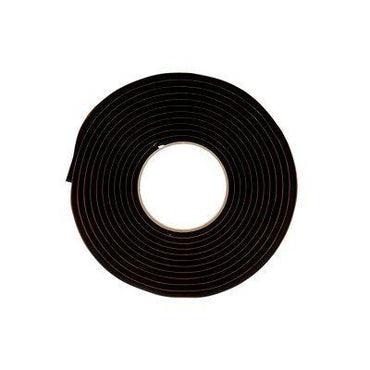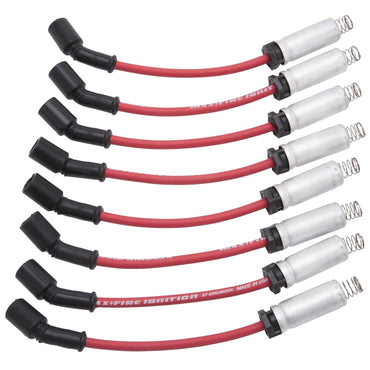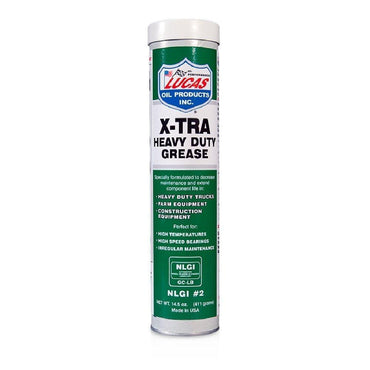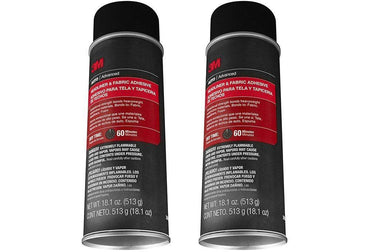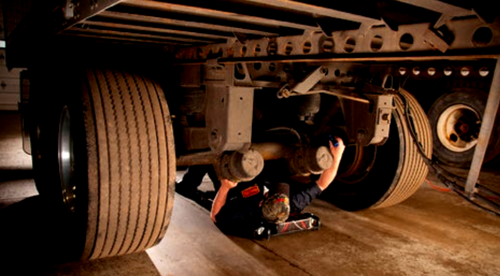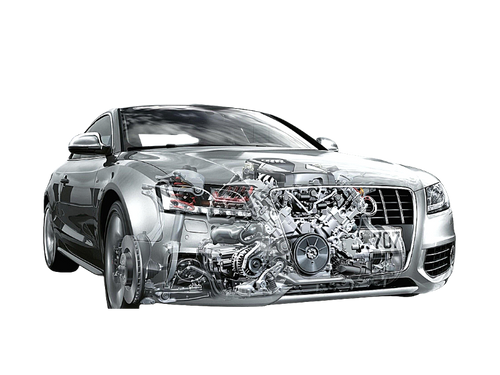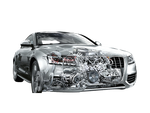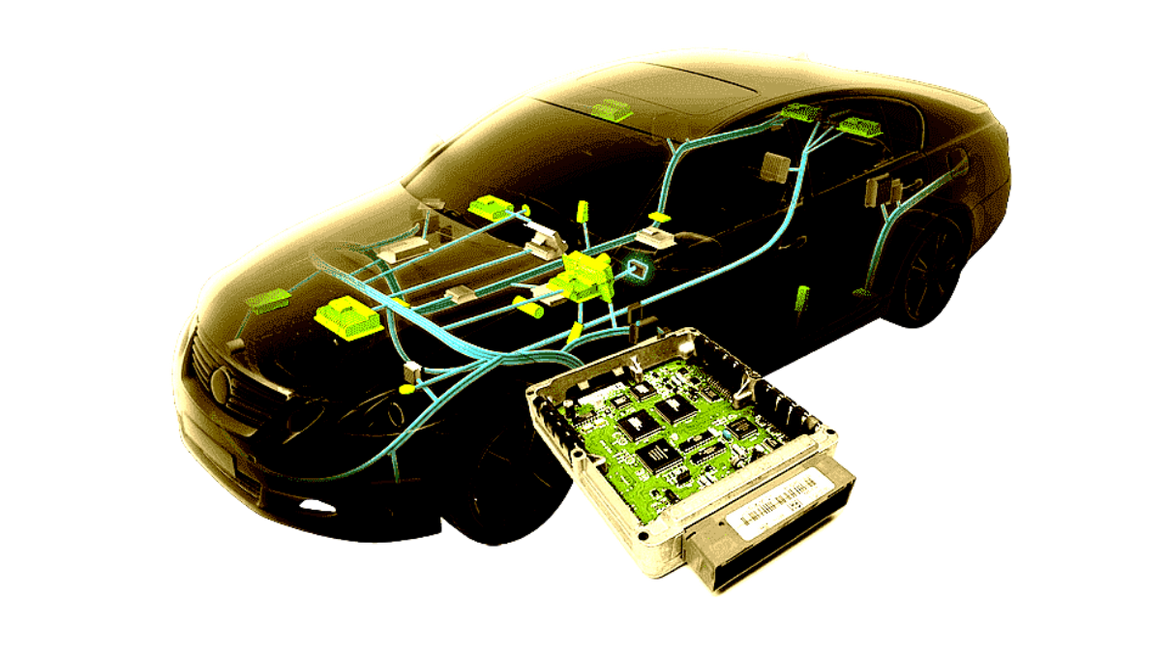
ECUs: From Programmables to Racing
- on June 13, 2021
- Categories: News and Resources
ECUs or Engine Control Unit or others might call it Engine Control Module (ECM), is an integral part of a vehicle. It acts as a brain as it governs all the engine functions, including maintaining and regulating the incoming fuel and air in the cylinder. It cannot be obliterated or removed as it plays a vital role in the engine’s performance and optimization. It also helps in increasing the power of the machine. Subsequently, do not be confused with the other ECU, the Electronic Control Unit - a collective term to describe electronic control systems - which the Engine Control Unit is a part of. In the car or subsystems that control the electronics, they don’t have many similarities, just their names. Other than that, they help each other by relaying and executing their parts properly to benefit the engine significantly.
Engine Control Unit’s primary role.
ECU is a type of Electronic Control Unit, which we mentioned earlier, that controls a series of actuators on an internal combustion engine. They ensure maximum performance by presenting and reading gathered data values through multiple sensors installed within the engine bay, data interpretation using lookup tables or multidimensional performance maps, and adjusting engine actuators. It would be hard for us to analyze these intricacies if not for ECU and the brilliance behind this component. Before the arrival of ECUs, Pneumatic and mechanical approaches are used to mechanically and dynamically control air-fuel mixture, idle speed, and ignition timing through pneumatic and mechanical means.
Another extension of the ECU is the Electronic Engine Management System or EEMS, which refers to the ECU taking control of the fuel lines and the fuel injection system that supplies the fuel to the engine. This works because sensors and actuators control the mechanism of the EEMS.
How does an ECU work? ECU controls the air-fuel ratio, idle speed, and variable valve timing
|
Air-fuel ratio situations: Modern engines use different fuel injection systems to deliver fuel to their cylinders. From there, the ECU determines the amount of fuel to spray into the cylinders through the oxygen sensor readings. These sensors are vital and play a huge role in telling the ECU if running on too much air or lean can be lesser fuel too) or rich (too much fuel or less air) compared to the stoichiometric conditions or ideal. Another sensor that involves the air fuel is the throttle position sensor. This sensor relays a message to the ECU how deep the throttle plate is opened when the gas pedal is stepped on. However, the mass airflow sensor measures the total amount of oxygen or air coming into the engine through the throttle plate. Finally, the engine coolant temperature sensor checks the engine if it still needs additional fuel depending on its temperature. If it’s on the cooler end, fuel will be injected into the cylinder. |
|
Idle speed controlled by either a bypass control stepper motor or by a programmable throttle stop. When driving, you can see the gauges and on the leftmost part is the tachometer made possible by the crankshaft position sensor. This sensor’s role is to monitor the engine timing functions such as fuel injection, spark events, and valve timing. Carburetor-based systems, especially the earlier ones, used programmables using a bidirectional DC motor. Idle speed control is vital in managing and anticipating engine loads at idle. Variable Valve Timing: The ECU controls when the valves are opening, which results in better fuel economy and combustion in the chamber as it allows the increase of airflow into the cylinder. To add to that, valves open sooner when running at a higher speed compared to a lower rate, which makes sense because high speeds demand higher air and fuel. |
ECUs: From Programmables to Racing
The majority of our engines today have ECUs, and not only are they there to ensure the efficient running of the engine, but they are also the catalyst for more robust and aggressive engines. ECUs are rewritable and programmable at the same time; though it sounds redundant, they’re different. That is why many car owners and makers, especially those who take the track as a lifestyle, modify their ECUs to elevate their engine game by overwriting the stock ECU in their cars.
However, many stock ECU does not or could not provide the correct type of control for the application in which the engine may be used, and this is where the aftermarket or upgrade components come in. To modify your Engine through ECUs, you have to buy a programmable one and replace the factory-shipped one. ECU is the link that is required to upgrade the turbocharger, superchargers, naturally aspirated engines, spark plugs or fuel injection upgrades, exhaust system upgrades or modifications, transmission upgrades, and even power output upgrades. Programming the ECU usually requires an interface to a desktop or laptop; this is important so the programming computer can send complete engine tunings to the control unit at the same time monitoring it in real-time. Connection is mostly made via USB and a port called OBD II.
A race-grade ECU is much more intricate than the common ones. It is equipped with a data logger to record all sorts of sensor data for later analysis that helps the engineers identify engine stalls, misfires, or any engine behaviors that affect the engine’s performance during a race. To add to that, racing requires communication from the driver to the engineers and drivers to their machine. A race ECU is connected to a data stack, a simple pane that allows the driver to see the current RPM, speed, oil and brake temperatures, and other engine data. These data stacks converse with the ECU by using several protocols, including RS-232 or CANbus. Information is relayed through the data link, which is situated below the steering column. Data loggers have a memory capacity of 16 megabytes.
ECU Programming
If your question is, “Can I tune the Engine myself?” The answer is, it depends. Just like other things, you need skills and proper knowledge to do this kind of upgrade or else, and it will mess up your engine. It is crucial to let someone who is a specialist or personnel who can do ECU upgrade take the task, for there are technicalities that are needed to be addressed beyond our comprehension.
Going back to programming the ECU, the specialists determine the optimal fuel flow with respect to the engine’s speed and throttle position. Usually, ECU tuning cannot be done on our home, and they are conducted in an engine performance facility which a dynamometer can be found. Dynamometers provide valuable pieces of information such as engine speed, torque output, power output, gear change, power-torque curve, and many more. Specialists utilize chassis dynamometers for street and other high-performance applications.
Engine tuning parameters include fuel injection volume, throttle-fuel volume mapping, and gear shift mapping. Other tuning variable parameters include:
Sensors of ECU:
- MAP : Manifold Absolute Pressure
- MAF : Mass Air Flow
- IAT: Intake Air Temperature
- CKP: Crankshaft Position
- CMP: Camshaft Position
- ECT: Engine Collant Temperature
- O2: Oxygen Sensor
- TP: Throttle Position
- VSS: Vehicle Speed Sensor
- Knock Sensor
- APP: Acceleration Pedal Position
- Refrigerant Sensor
How to choose the suitable Aftermarket ECU for your engine?
There are several options for the modification of your ECU, namely: Chipping, Reprogramming, Piggyback, and Full Engine Management.
The first thing to consider in upgrading or modifying ECU is to identify your engine make, model, year, OEM part number, and engine size. That is important for some ECUs to look similar outside but are entirely different inside.
Next is knowing your wiring. There are two major groups of ECU, Universal, and Plug and Play. Universal ECUs are used for those who are planning to do an engine swap, building project race cars, or just rewiring them. This ECU has not much problem and works with most popular engines out there, and is supported with a wide range of wiring options. The other one is the Plug and Play. This ECU connects directly to the factory harness via a unique plug-and-play adaptor.
And most of all, know your goals. Whether you are planning to attain a 300HP or 100 HP, the number does not matter as long as you put into mind the thing you want to achieve. It is easier to make a decision instead of planning right at the moment.
Some Aftermarket Brands that you can buy ECU:
- Haltech
- Bosch Motorsport
- OMEX Technology
- Megasquirt
- Adaptronic
- HKS
- AEM
- ELITE
- MoTeC
- ECUMASTER
- LINK
- DTA Fast
- Syvecs
- Simtek
- Emerald
Summary
ECU is as essential as other car components; without it, the engine will not run efficiently, considering that most of our modern engines are equipped with these. They are vital in motorsport and contain the data needed for later review. It is also used as a communication tool to inform the drivers in race situations. It adds knowledge to us common drivers that with a simple chip, you can upgrade and achieve higher power output through data analysis and proper consultation.
